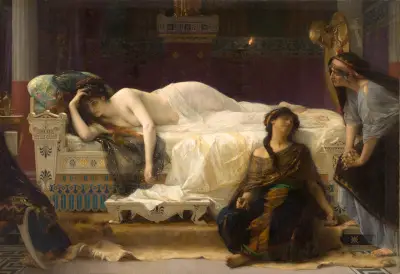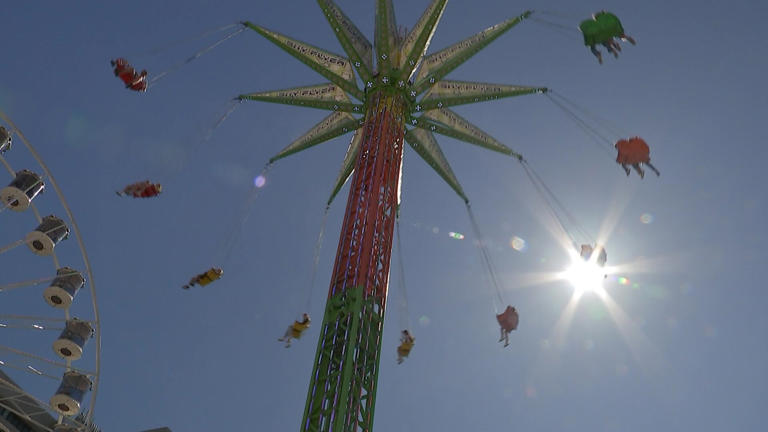
Did you know that Alexandre Cabanel, the renowned French painter, created over 700 paintings throughout his career?
His artistic talent and unique style made him one of the most influential artists of the 19th century.
From his exquisite portraits of the elite to his captivating historical and mythological paintings, Cabanel’s work continues to captivate audiences even today.
Join us as we delve into his fascinating biography, exploring his rise to prominence, notable works, and enduring legacy.
Get ready to be inspired by the life of this visionary artist.
Contents
- 1 Key Takeaways
- 2 Early Life and Education
- 3 Influences and Artistic Style
- 4 Rise to Prominence
- 5 Portraits of the Elite
- 6 Historical and Mythological Paintings
- 7 Reception and Critical Response
- 8 Awards and Honors
- 9 Legacy and Influence
- 10 Notable Works
- 11 Personal Life and Later Years
- 12 Frequently Asked Questions
- 12.1 What Was Alexandre Cabanel’s Favorite Medium to Work With?
- 12.2 Did Alexandre Cabanel Have Any Famous Artistic Rivals or Competitors?
- 12.3 How Did Alexandre Cabanel’s Upbringing Influence His Artistic Career?
- 12.4 What Were Some of the Challenges Alexandre Cabanel Faced in His Rise to Prominence?
- 12.5 Did Alexandre Cabanel Ever Experiment With Different Artistic Styles Throughout His Career?
- 13 Conclusion
Key Takeaways
- Alexandre Cabanel was a French artist born in 1823 in Montpellier, France.
- He was highly influenced by classical masters like Raphael and Ingres, as well as the academic, neoclassical, and romantic art movements.
- Cabanel’s distinctive artistic techniques included precise and meticulous brushwork, use of vibrant hues, and a combination of classical and contemporary influences.
- He rose to prominence through exhibitions at the Paris Salon, became a favorite artist of the French elite, and received numerous awards and honors throughout his career.
Early Life and Education
In your early life and education, you attended the École des Beaux-Arts in Paris, where you honed your artistic skills under the guidance of renowned instructors. This period of your life was marked by both challenges and achievements.
Growing up in a modest family, you faced financial difficulties that could have hindered your pursuit of education. However, your determination and passion for art drove you to overcome these early life challenges.
At the École des Beaux-Arts, you were exposed to a rigorous curriculum that pushed you to explore various artistic techniques and styles. The school’s emphasis on classical training provided you with a solid foundation in the principles of drawing, composition, and anatomy. This educational environment fostered a sense of discipline and allowed you to refine your artistic abilities.
Your time at the École des Beaux-Arts also provided you with invaluable opportunities to interact with fellow students and established artists. These interactions enabled you to broaden your artistic perspective and gain insights from experienced practitioners. Additionally, the guidance of esteemed instructors further enhanced your skills and deepened your understanding of the artistic process.
Influences and Artistic Style
As you explore Alexandre Cabanel’s influences and artistic style, you’ll discover the significant impact of his major artistic influences on his work.
Cabanel drew inspiration from the classical masters, such as Raphael and Jean-Auguste-Dominique Ingres, whose attention to detail and refined techniques influenced his own artistic approach.
In terms of style, Cabanel was known for his meticulous attention to detail, his precise brushwork, and his ability to create highly realistic and polished images.
These distinctive artistic techniques contributed to Cabanel’s success and popularity during his time.
Major Artistic Influences
Take a look at the major artistic influences that shaped Alexandre Cabanel’s unique style.
Cabanel drew inspiration from various sources, which contributed to his artistic development and the distinctiveness of his work. Some of his major artistic influences include:
-
Academicism: Cabanel was heavily influenced by the academic art movement, which emphasized the importance of technical skill and classical subject matter. This influence can be seen in his meticulously detailed and refined paintings.
-
Neoclassicism: Cabanel was also influenced by the neoclassical style, which sought to revive the aesthetics and ideals of ancient Greek and Roman art. This influence is evident in his use of classical themes and compositions.
-
Romanticism: Cabanel was inspired by the romantic movement, which emphasized emotion, individualism, and imagination. This influence can be seen in his use of soft, sensual brushwork and his ability to capture emotional intensity.
-
Renaissance Masters: Cabanel admired the work of Renaissance masters such as Raphael and Leonardo da Vinci. Their mastery of form, composition, and technique influenced Cabanel’s approach to painting.
These artistic inspirations and creative influences shaped Cabanel’s unique style and laid the foundation for his distinctive artistic techniques.
Now, let’s delve into Cabanel’s distinctive artistic techniques that set him apart from his contemporaries.
Distinctive Artistic Techniques
Explore how Cabanel’s distinctive artistic techniques were influenced by various sources and shaped his unique artistic style. Cabanel’s distinctive brushwork can be traced back to his study of the Old Masters, particularly the works of Raphael and Ingres. He admired their precise and meticulous approach to painting, which he incorporated into his own technique. Additionally, Cabanel was influenced by the Romantic movement, which emphasized emotion and drama in art. This can be seen in his use of color, where he often employed rich and vibrant hues to evoke a sense of passion and intensity. Cabanel’s use of color was also influenced by the Orientalist movement, which introduced him to a wider palette and exotic subject matter. Overall, Cabanel’s distinctive artistic techniques, including his brushwork and use of color, were shaped by a combination of classical traditions and contemporary influences.
| Distinctive Brushwork | Use of Color |
|---|---|
| Precise and meticulous | Rich and vibrant hues |
| Influenced by Old Masters | Emotion and intensity |
| Classical traditions | Orientalist movement |
Rise to Prominence
You made a significant impact on the art world as your talent and skill propelled you to prominence. Your rise to prominence was marked by several key factors that influenced other artists and had a lasting impact on the art world.
-
Influence on other artists: Your innovative techniques and masterful execution inspired a generation of artists. Your ability to capture the human form with such precision and beauty set a new standard in academic art, and many artists sought to emulate your style.
-
Impact on the art world: Your works were widely acclaimed and recognized for their technical excellence and aesthetic appeal. You received numerous awards and accolades, solidifying your position as one of the leading artists of your time. Your paintings were highly sought after by collectors and patrons, further cementing your influence on the art world.
-
Exploration of themes: Your choice of subject matter, often depicting mythological and historical scenes, added depth and meaning to your artwork. By exploring these themes, you brought a sense of grandeur and narrative to your paintings, captivating audiences and leaving a lasting impression.
-
Artistic legacy: Your contributions to the art world continue to be celebrated and studied today. Your works can be found in prestigious museums and galleries around the world, serving as a testament to your enduring influence and impact.
As you transition into the subsequent section about ‘portraits of the elite’, your ability to capture the essence and status of the elite through your portraiture will be explored.
Portraits of the Elite
As you explore Alexandre Cabanel’s portraits of the elite, you’ll discover the artist’s keen understanding of social status. Through his meticulous attention to detail and sophisticated composition, Cabanel masterfully captures the opulence and refinement of the upper class.
His use of light and color, combined with his skillful brushwork, brings these portraits to life, highlighting the elegance and prestige of the subjects.
Moreover, Cabanel’s portraits often contain subtle symbols and allegories that provide deeper insights into the personalities and aspirations of the elite individuals he depicted.
Elite’s Social Status
Immerse yourself in the opulence and prestige of the elite through Cabanel’s captivating portraits. His works not only showcase the beauty and elegance of the upper class but also shed light on the social hierarchy and class divisions of the time.
- Cabanel’s portraits of the elite serve as a visual representation of their privileged status, highlighting their wealth, power, and influence.
- Through his meticulous attention to detail, Cabanel captures the luxurious lifestyles and extravagant fashion choices of the elite, emphasizing their elevated position in society.
These portraits also reveal the rigid social structure of the time, with the elite occupying the highest rungs of the ladder, while the lower classes are depicted in more subdued and modest settings.
- Cabanel’s ability to portray the elite with such precision and grandeur elevates their status even further, solidifying their position at the top of the social hierarchy.
Through Cabanel’s portraits, one can gain a deeper understanding of the social dynamics and class divisions that shaped the elite of the nineteenth century.
Cabanel’s Artistic Style
Take a closer look at the artistry of Alexandre Cabanel as he captures the essence of the elite through his mesmerizing portraits. Cabanel’s use of color is truly remarkable, as he skillfully blends vibrant hues to create a sense of opulence and grandeur. His meticulous attention to detail is evident in every stroke, bringing his subjects to life on the canvas. One of Cabanel’s notable strengths lies in his portrayal of women. He masterfully captures their grace, beauty, and poise, making them the embodiment of elegance and sophistication. Through his art, Cabanel not only celebrates the elite but also showcases the power and allure of the female form. His portraits serve as a window into a world of privilege and prestige, inviting us to marvel at the splendor of the upper class.
Symbolism in Portraits
Delve deeper into Cabanel’s portraits of the elite and discover the hidden symbolism that adds depth and meaning to his captivating artworks. In these portraits, Cabanel skillfully incorporates symbolism to explore the complex emotions and inner lives of his subjects.
Here’s a closer look at the symbolism in his portraits:
-
Objects: Cabanel often includes objects in his portraits that hold symbolic meaning, such as flowers representing love or wealth, or books signifying knowledge and intellect.
-
Colors: The use of colors in Cabanel’s portraits also carries symbolic significance. Warm, vibrant colors may convey passion and vitality, while cooler tones can evoke a sense of calm or melancholy.
-
Gestures and poses: The way his subjects are posed or the gestures they make can convey specific emotions or messages, adding depth to the overall portrayal.
-
Background settings: Cabanel carefully selects the settings for his portraits, which often reflect the social status or personal interests of his subjects.
By incorporating these symbolic elements, Cabanel invites viewers to explore the emotions and inner worlds of the elite individuals he portrays.
Now, let’s move on to discussing Cabanel’s historical and mythological paintings.
Historical and Mythological Paintings
You can explore Alexandre Cabanel’s numerous historical and mythological paintings. Cabanel was known for his ability to depict mythological symbolism and historical accuracy in his works. His paintings often portrayed scenes from Greek and Roman mythology, as well as historical events. One of his most famous works in this genre is ‘The Birth of Venus,’ which portrays the mythological goddess emerging from the sea. Cabanel’s attention to detail and his mastery of color and composition made his historical and mythological paintings captivating and visually stunning.
In his historical paintings, Cabanel aimed to recreate significant moments from the past with meticulous accuracy. He conducted extensive research to ensure that his portrayals were as historically precise as possible. This dedication to historical accuracy added depth and authenticity to his works, allowing viewers to immerse themselves in the depicted events.
Transitioning into the subsequent section about reception and critical response, Cabanel’s historical and mythological paintings received both praise and criticism from art critics and the public. While some admired his technical skill and the beauty of his works, others criticized him for being too traditional and lacking innovation. Despite the mixed reception, Cabanel’s historical and mythological paintings continue to be celebrated for their artistic excellence and ability to transport viewers into different worlds and times.
Reception and Critical Response
But, you might be wondering, how was Alexandre Cabanel’s work received and what was the critical response to his paintings? Well, let’s delve into the reception and critical response to Cabanel’s artwork.
Here are some key points to consider:
-
Cabanel’s paintings were highly acclaimed during his lifetime, particularly his historical and mythological works. Critics praised his technical skill and attention to detail, as well as his ability to capture the beauty and sensuality of his subjects.
-
His work was often seen as a reflection of the academic art style, which was dominant during the 19th century. This style emphasized classical ideals and sought to create idealized representations of the human form.
-
Cabanel’s paintings were widely exhibited and received numerous awards and honors. He was a favorite among the French elite and his work was frequently purchased by wealthy collectors.
-
However, as the art world shifted towards more modern and avant-garde styles in the late 19th century, Cabanel’s work fell out of favor. Critics began to view his paintings as overly formulaic and lacking originality.
Awards and Honors
Now let’s turn our attention to the awards and honors that Alexandre Cabanel received throughout his career. These notable artistic recognitions not only highlight his talent and skill but also solidify his place in art history.
From prestigious accolades to the impact he’d on the artistic community, Cabanel’s achievements have left a lasting legacy in the art world.
Notable Artistic Recognitions
Alexandre Cabanel received numerous prestigious awards and honors throughout his career. His artistic contributions and impact on the art community were widely recognized and celebrated. Some notable artistic recognitions include:
-
Gold Medal at the Paris Salon: Cabanel’s paintings consistently received critical acclaim at the renowned Paris Salon, earning him multiple gold medals. This recognition solidified his status as one of the leading artists of his time.
-
Appointment as Professor at the École des Beaux-Arts: Cabanel’s expertise and talent led to his appointment as a professor at the prestigious École des Beaux-Arts in Paris. This position allowed him to impart his knowledge and influence the next generation of artists.
-
Legion of Honor: In recognition of his artistic achievements, Cabanel was awarded the Legion of Honor, one of France’s highest honors. This distinction highlighted his significant contributions to the field of art.
-
Commissioned works for prominent figures: Cabanel’s talent was sought after by influential figures, including Napoleon III and Empress Eugénie. Being commissioned by such esteemed individuals further solidified his reputation as a remarkable artist.
Through these notable artistic recognitions, Cabanel’s impact on the art community was undeniable, leaving a lasting legacy that continues to inspire and awe freedom-seeking individuals today.
Prestigious Accolades Received
You’ve probably wondered what prestigious accolades Alexandre Cabanel received throughout his career. Well, I’m here to tell you that his contributions to the art world did not go unnoticed. Cabanel’s exceptional talent and dedication earned him numerous awards and honors, solidifying his status as a renowned artist. One of his most notable accolades was winning the Prix de Rome, a highly esteemed competition for young artists. This achievement catapulted his career and established him as one of the leading painters of his time. Cabanel’s impact on contemporary artists cannot be overstated. His innovative techniques and mastery of the human form continue to inspire and influence generations of artists. Additionally, his influence on art education cannot be ignored. Cabanel served as a professor at the École des Beaux-Arts in Paris, where he imparted his knowledge and skills to aspiring artists, leaving a lasting legacy in the field of art education.
| Accolades | Year |
|---|---|
| Prix de Rome | 1845 |
| Legion of Honor | 1864 |
| Salon Gold Medal | 1865 |
| Paris Exposition | 1867 |
| Order of Leopold | 1878 |
Impacts on Artistic Community
The awards and honors received by Alexandre Cabanel had a significant impact on the artistic community. His recognition not only elevated his status as an artist but also influenced other artists, particularly female artists, who were inspired by his success.
Cabanel’s achievements served as a source of motivation for aspiring artists, breaking barriers and encouraging them to pursue their passions.
However, alongside his accolades, Cabanel’s artwork was also met with controversy. Some critics argued that his paintings were overly idealized and lacked depth, dismissing them as mere works of decorative art.
Despite the controversy, Cabanel’s impact on the artistic community can’t be denied, as his awards and honors continue to shape the way artists approach their craft today.
Legacy and Influence
As you delve into Alexandre Cabanel’s biography, you’ll come to understand the lasting legacy and profound influence he had on the art world. Cabanel’s cultural significance lies in his ability to bridge the gap between academic art and the emerging avant-garde movements of his time. He was revered for his technical mastery and adherence to classical ideals, which made him a respected figure in the art community.
Cabanel’s influence on contemporary artists cannot be overstated. Many artists of his time looked to him as a role model, striving to emulate his meticulous attention to detail and his ability to capture the human form with precision. His works served as a source of inspiration for countless painters who sought to achieve the same level of technical skill and aesthetic beauty.
To further emphasize Cabanel’s impact, let’s take a look at the table below:
| Legacy and Influence of Alexandre Cabanel |
|---|
| Cultural Significance |
| Influence on Contemporary Artists |
This table highlights the two main aspects of Cabanel’s legacy, showcasing how he left a cultural imprint on the art world and how he influenced the work of his contemporaries.
Notable Works
Take a moment to explore some of Alexandre Cabanel’s most significant and influential works. Cabanel was known for his mastery of symbolism in portraits as well as his historical and mythological paintings. His ability to convey complex ideas and emotions through his art set him apart from his contemporaries.
-
‘The Birth of Venus’ (1863): This iconic painting showcases Cabanel’s skill in capturing the ethereal beauty and sensuality of the female form. The use of symbolism, such as the shell and the sea foam, adds depth and meaning to the piece.
-
‘Fallen Angel’ (1868): This painting challenges traditional religious beliefs by depicting the fallen angel as a seductive and alluring figure. Cabanel’s use of light and shadow creates a dramatic atmosphere, further emphasizing the fallen angel’s inner turmoil.
-
‘The Death of Francesca da Rimini and Paolo Malatesta’ (1870): This historical painting depicts the tragic love story of Francesca and Paolo, condemned to eternal damnation for their forbidden love. Cabanel’s attention to detail and his ability to capture emotion make this piece a powerful and moving portrayal of love and tragedy.
-
‘Phaedra’ (1880): Cabanel’s mythological painting portrays the complex character of Phaedra, a woman torn between her forbidden desires and her duty as a queen. The use of symbolism, such as the crown and the snake, adds depth and symbolism to the piece, reflecting Phaedra’s internal struggle.
Cabanel’s notable works continue to be admired and studied for their technical skill, emotional depth, and symbolic meaning.
Personal Life and Later Years
Throughout your life and in your later years, you’ll find that Alexandre Cabanel experienced both personal joys and professional successes.
In terms of personal relationships, Cabanel was married to his childhood sweetheart, Eugénie Lucchesi, and they’d two children together. He was known to be a devoted husband and father, often finding inspiration in the love and support of his family.
Cabanel also maintained close friendships with fellow artists, such as William-Adolphe Bouguereau and Jean-Léon Gérôme, who provided him with artistic inspirations and intellectual stimulation.
In his later years, Cabanel continued to thrive professionally. He received numerous commissions from wealthy patrons and his works were highly sought after. His paintings were exhibited in prestigious galleries and international exhibitions, solidifying his reputation as one of the leading academic painters of his time.
Cabanel’s attention to detail and his ability to capture the human form with precision and elegance made him a favorite among art collectors and enthusiasts.
Despite his success, Cabanel remained humble and dedicated to his craft until his death in 1889. His legacy lives on through his influential works and his impact on the art world.
Alexandre Cabanel’s personal life and later years serve as a testament to the power of personal relationships and the importance of artistic inspirations in shaping an artist’s journey.
Frequently Asked Questions
What Was Alexandre Cabanel’s Favorite Medium to Work With?
Alexandre Cabanel’s favorite medium to work with was oil paint. Influenced by academic art, he faced challenges in his rise to prominence. He experimented with different artistic styles, showcasing his versatility and skill.
Did Alexandre Cabanel Have Any Famous Artistic Rivals or Competitors?
Yes, Alexandre Cabanel had famous artistic rivals and competitors. He was known for his rivalry with William-Adolphe Bouguereau, another prominent French artist of the time. Their rivalry fueled their artistic pursuits and pushed them to create exceptional works.
How Did Alexandre Cabanel’s Upbringing Influence His Artistic Career?
Your upbringing had a profound impact on Alexandre Cabanel’s artistic career. It shaped his style and themes, adding depth and emotion to his work. He became a significant figure in the art world, gaining recognition and influence during his lifetime.
What Were Some of the Challenges Alexandre Cabanel Faced in His Rise to Prominence?
In his rise to prominence, Alexandre Cabanel faced numerous challenges. From societal expectations to experimentation with different artistic styles, he navigated a complex path. Yet, his favorite medium and his upbringing’s influence played crucial roles in his success.
Did Alexandre Cabanel Ever Experiment With Different Artistic Styles Throughout His Career?
Throughout his career, Alexandre Cabanel did experiment with different artistic styles, showcasing his versatility and creativity. His upbringing, which emphasized the importance of exploration and freedom, greatly influenced his approach to art.
Conclusion
In the world of art, Alexandre Cabanel’s brush danced with elegance and grace, his creations a symphony of color and form.
From his early days to his rise to prominence, Cabanel captured the essence of his subjects, whether they be elite portraits or mythological tales.
His skillful brushstrokes earned him awards and honors, leaving behind a legacy that continues to inspire.
Cabanel’s artistry will forever echo in the annals of art history, a testament to his enduring influence.









































































